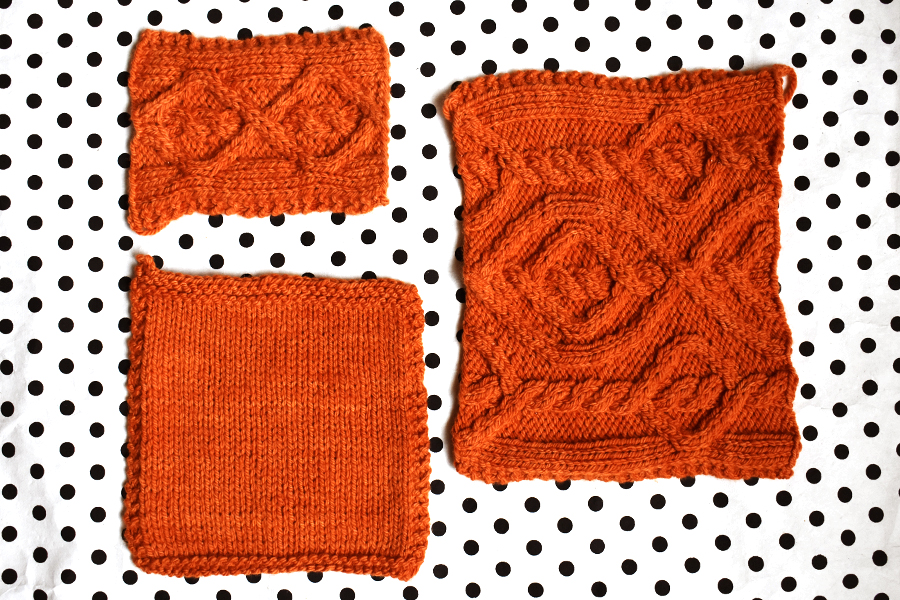I worked through a bunch of swatches for my Seamless Set-in Sleeve KAL project, most of which were based on the Counter-Twisted Cable from one of my Barbara Walker stitch dictionary. A failed swatch for the larger back cable gave my inspiration for the narrow cable for the fronts that bleeds into the margins of the stockinette. Once I got that figured out, things fell into place for how to layout my larger back cable.

I also knit a large stockinette swatch to use to calculate gauge. I will measure 4 in / 10 cm squares in 4-5 different spots on the swatch and then find the average. Then I’ll reduce down to get stitches and rows per inch for my sweater math.

With my gauge and my sweater measurements based on my pattern standards, I lay out a neatly labeled spreadsheet to begin my calculations. If you’re making your own sweater from scratch, you’ll have one custom size instead of my standard seven, but you can still lay things out in a similar way, based on the instructions in A Guide to Seamless Set-in Sleeve Sweaters to work with your own measurements and adjust for ease and fit. All of the measurements in my spreadsheet are for the sweater itself, and I’ll work with my gauger per inch to get stitch and row counts. I use functions to tie my cells together, so changes trickle down. For example, if I had 4 sts to the inch, when I calculate my cross back width for my smallest size, in the cell next to Cross Back Sts, I’d enter “=(B1*4)” to get the exact number of stitches. If it equalled an odd number and I needed an even one, I might change it to “=(B1*4)-1” to adjust it. To calculate how many decreases I’d need for waist shaping, in the cell next to Decs, I’d enter “=(B27-B31)/4” which would give me the difference between the bust and waist divided by four for the two pairs of decreases on each side. If I change the bust or waist size, the number of decrease sets will automatically change, too! I connect together as much as possible within my spreadsheet because all of the stitch counts are going to get tied together when I start my actual sweater. After I get my numbers down based on stockinette, I’ll add or subtract to adjust for differences in width with my panels.
With a clear vision of your sweater and a neatly labeled spreadsheet, you can cast on and work off of that, but if you think you’ll need more guidance, use Plain Jane or another pattern for reference to write up instructions for your personal use, using your custom numbers. The official cast-on date for the Seamless Set-in Sleeve KAL is December 26th, so come on over to the Untangling Knots Ravelry group and share with us how your sweater is going!
Leave a Reply